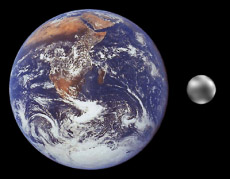This civilization did not have warrior gods, as they were not participants in warlike confrontations and what weapons they had were very simple and adapted to hunting. Only when they fell under the influence of the Toltecs did the cult of the Mexican god Quetzacoatl (whom they renamed Kukulkán, which means «feathered snake») really enter their lands, with its fighting fervour and its strange rites. The authentic Mayan divinities were satisfied with mere animal sacrifices.
All of the people, both rich and poor, dressed very simply, respecting cleanliness and personal hygiene. They generally married at the age of 20 (which was, according to them, the perfect number) and union between blood relatives was prohibited. Monogamy was the rule -only men of rank could have more than one wife- as adultery committed by common men was punished by death. Divorce also existed, which was allowed to women when a husband abandoned his home.
Their ideal of beauty or aesthetics was to have a flattened forehead and a lengthened cranium. In order to do this, boards were placed on the heads of newborns and were then gradually tightened until the desired shape was obtained. Afterwards, a strap with a round object at the end was attached to their hair. The child had to watch it, and over time, became cross-eyed.
Women filed their teeth to encrust them with jade plates, they wore a stone decoration pierced through the nose and they hung thick rings from their earlobes. As they wore their hair long, they plaited it and sometimes wore bands across their foreheads. They tattooed their bodies with beautiful abstract designs, as did the men.
The Mayan Universe
This culture meticulously studied the movement of the stars, which allowed them to conclude that time could be measured. This was how they conceived two complex calendars, which regulated civil and religious activities, respectively. The haab or solar year had 365 days, divided into 18 months of 20 days plus an additional month of only five. Each month had a name and was ruled over by a deity, and days were designated numbers of, or up to 19. There was also the tzolkin or lunar year, which had 260 days. Both calendars acted simultaneously in the form of a true «calendar wheel», as each day was designated in reference to the two systems. When the solar year and the lunar year coincided on a single date, it was known as a «Venusian year», which happened every 104 years, that is, two cycles of 52 solar years and two lunar cycles of 73 years.
They also invented a vigesimal numeral system. This meant that rather than changing column every 10 numbers (like in our decimal system), they changed every 20. Units up to four were represented by dots; five was a line; and the rest of the numbers up to 19 were a combination of lines and dots. However, in this system each number (up to 20) had a special hieroglyph. After 20, the value was indicated by position within the hieroglyph. In addition, they created a number equivalent to zero, which they represented by a sign.
Monumental construction
Mayan architecture is one of the most beautiful architectural styles known. Its constructions were based on large stone blocks, exceeding those of the other pre-Columbian cultures in both height and beauty. Although they did not create new architectural types, they perfected and beautified the works already built by the other Mesoamerican cultures.
The most characteristic monument was the pyramid temple, which had a quadrangular base with steps which went up towards the upper platform along one or several stairways. They discovered a new roofing technique which used a false arch and a false dome, obtained through the close placing of rows of stone blocks. This system, which covered very wide spaces, was sufficient to counteract the weight of the roofs of the small temples which topped the high rising pyramids. These constructions were much higher than those of the Aztecs; some in Tikal even surpassed 70 metres.
The palaces, occupied by the aristocracy, were built above an elevated platform and had a number of floors and even interior patios. Other important buildings were the astronomical observatories and the type of court used in the ball games. The observatories were generally built in the form of a tower, whose walls had windows or slot windows for observation, and the ball game courts were built from stone and were in all Mayan cities.
Painting and sculpture
Using the technique of frescoes and a great variety of colours, this civilization made paintings of religious and historic themes, but currently, only examples from Bonampak have been preserved, as the Spanish destroyed them. The situation with sculptures was different; today they are the truest testimony to this culture, due to the fact that they have been found almost completely intact. They were the perfect complement for the architecture, using mud, wood and stucco to decorate tablets, staircases, friezes and lintels. In the 9th century, the classical style of the old empire derived into heavily ornamented and baroque forms.









